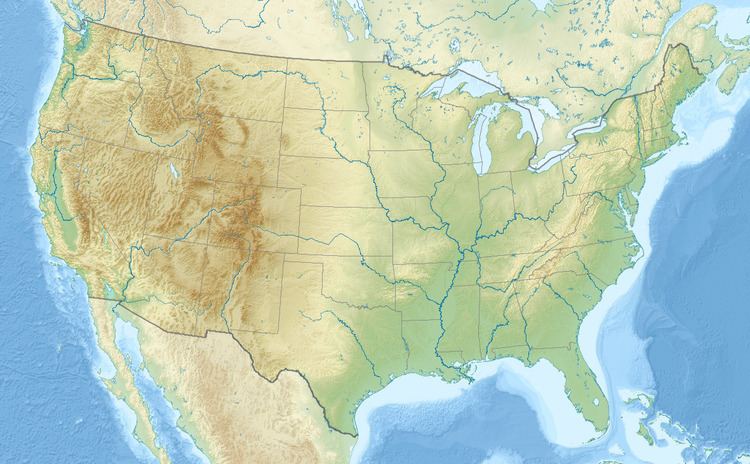Full name Beasley Coliseum Phone +1 509-335-3525 | Opened 25 September 1973 Architecture firm John Graham & Company | |
 | ||
Capacity 11,671 (2006–present)11,566 (2004–2006)12,058 (1973–2004) Address Washington State University, 855 Fairway Ln, Pullman, WA 99163, USA Construction cost 8.5 million USD ($45.2 million in 2015 dollars) Similar Washington State University, Martin Stadium, Alaska Airlines Arena at, Gill Coliseum, Arizona State University Profiles | ||
Mike leach at beasley coliseum
Beasley Coliseum is a multi-purpose arena on the campus of Washington State University in Pullman, Washington. Opened 44 years ago in June 1973, its current seating capacity is 11,671 for basketball. It is the home venue for both the Cougars men's and women's basketball teams of the Pac-12 Conference.
Contents
- Mike leach at beasley coliseum
- Cougar logo and messaging added to beasley coliseum roof
- First games
- Friel Court
- NCAA tournament
- Entertainment
- References
The arena was renamed in 1981 for Wallis Beasley (1915–2008), a long-time sociology professor and executive vice president, shortly before his retirement from the university. Beasley was WSU's faculty representative for athletics in the 1960s and also served as interim university president. For its first eight years, the venue was known as "Washington State University Performing Arts Coliseum."
The building used "space frame" construction, relatively novel at the time. The elevation of the court is approximately 2,550 feet (780 m) above sea level.
Cougar logo and messaging added to beasley coliseum roof
First games
Its first sporting event was an NBA exhibition game between Seattle and Portland on September 25, 1973. The first collegiate sporting event was a men's varsity basketball game against LSU on December 1, immediately preceded by a freshman game. Intercollegiate basketball was formerly played in Bohler Gymnasium, which opened in 1928 and is now home to Cougar volleyball.
The building's inaugural event was the university's commencement exercises on June 3, 1973.
Friel Court
Located on the east side of campus, the building includes Friel Court, the name of the basketball playing surface. It honors Jack Friel (1898–1995), the longtime head coach of the WSU men's basketball team, who led the Cougars to 495 victories over 30 years. Friel stepped down as head coach in 1958 became the first commissioner of the Big Sky Conference, originally based in Pullman (from 1963 to 1971), because that's where he lived. The court was named for Friel in late April 1977, announced by President Glenn Terrell at a meeting of the board of regents.
NCAA tournament
The coliseum has hosted the sub-regionals of the NCAA men's basketball tournament three times: 1975, 1982, and 1984.
The 1975 tournament had 32 teams and the sub-regional had just two games: Montana and eventual champion UCLA advanced before 10,500. UCLA trailed Michigan by four at halftime and needed overtime to win by nine. Montana beat Utah State by six. The next week in Portland, UCLA defeated Montana.
By 1982, the tournament had 48 teams and its Pullman sub-regional had four games with six teams. Both seeded teams with first-round byes advanced: Oregon State dispatched Pepperdine and Palouse neighbor Idaho outlasted Iowa in overtime to advance to the Sweet Sixteen, with 12,340 in attendance. The next week in Provo, Utah, OSU eliminated Idaho, then was defeated by Georgetown, the eventual runner-up.
The 1984 tournament had 53 teams and six played in Pullman. WSU's archrival Washington beat Nevada then upset seeded Duke while eventual champion Georgetown outlasted SMU 37-36 before over 10,500 spectators.
Entertainment
The building's full name reflects the fact that it is used not only for concerts, big-name speakers, dinners, and commencement, but also for basketball as mentioned above. The building may be reconfigured for seating capacities of 12,000 in the round to 9,000 in an end-stage configuration for concerts, to 2,500 in a theater configuration using an extensive system of fly-in curtains, an adjustable cloth scrim ceiling, and a portable proscenium stored under the floor.
The original opera house / theater configuration featured one of the first synthesized acoustical environments using surround speaker systems. An onsite reverberation chamber tuned with fiberglass panels for the specific acoustical configuration was combined with the first commercial use of a digital delay line, the Lexicon DD1, then fed to the side and overhead speakers. When properly set up, it was capable producing a very convincing acoustical rendition of a theater, an opera house, or by changing the delay settings and retuning the reverb chamber, even a cathedral. Unfortunately, a sewer drain line had been installed from the southeast corner restroom facilities through the reverb chamber, and if a toilet flushed when the system was in operation, the resulting sound effect was extraordinary. After discovering that, locking the restroom was a management priority whenever the theater was prepared for surround sound use. More recently full digital reverberation replaced the chamber.
The Coliseum's Hall of Fame—famous entertainers who have performed there—include comedians such as Bob Hope, Bill Cosby, Jay Leno and Whoopi Goldberg and musical stars or shows such as The 5th Dimension, Tony Orlando and Dawn, Stevie Wonder, Bob Dylan, Elton John, Def Leppard, Metallica, Metal Church, Van Halen, Dana Carvey, Drew Carey, Montgomery Gentry, Bill Engvall, Howie Mandel, Grease & Cats. The Harlem Globetrotters have performed there five times.
The coliseum has been the venue, for many years, for the Great Performances series, organized by Festival Dance and Performing Arts Association, of neighboring Moscow, Idaho.
Overflow crowds attended lectures by Noam Chomsky on April 22, 2005, and by Jane Goodall on March 8, 2007.
On March 6, 2010, the arena hosted a WWE SmackDown house show.
